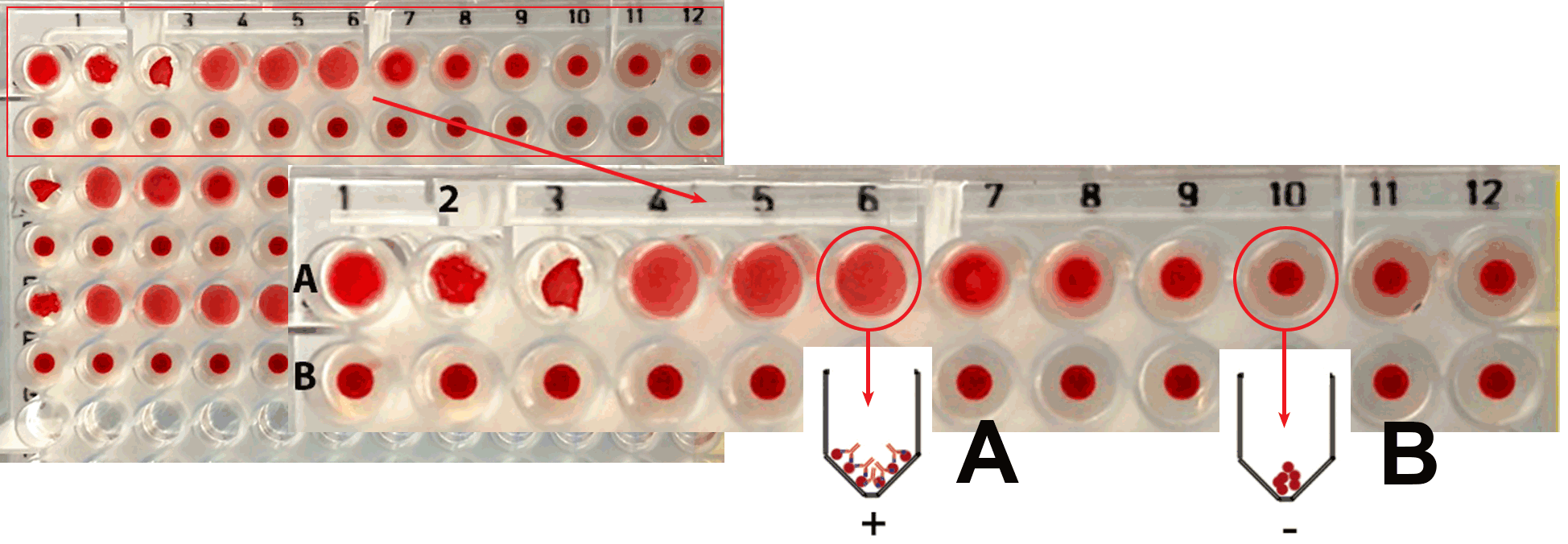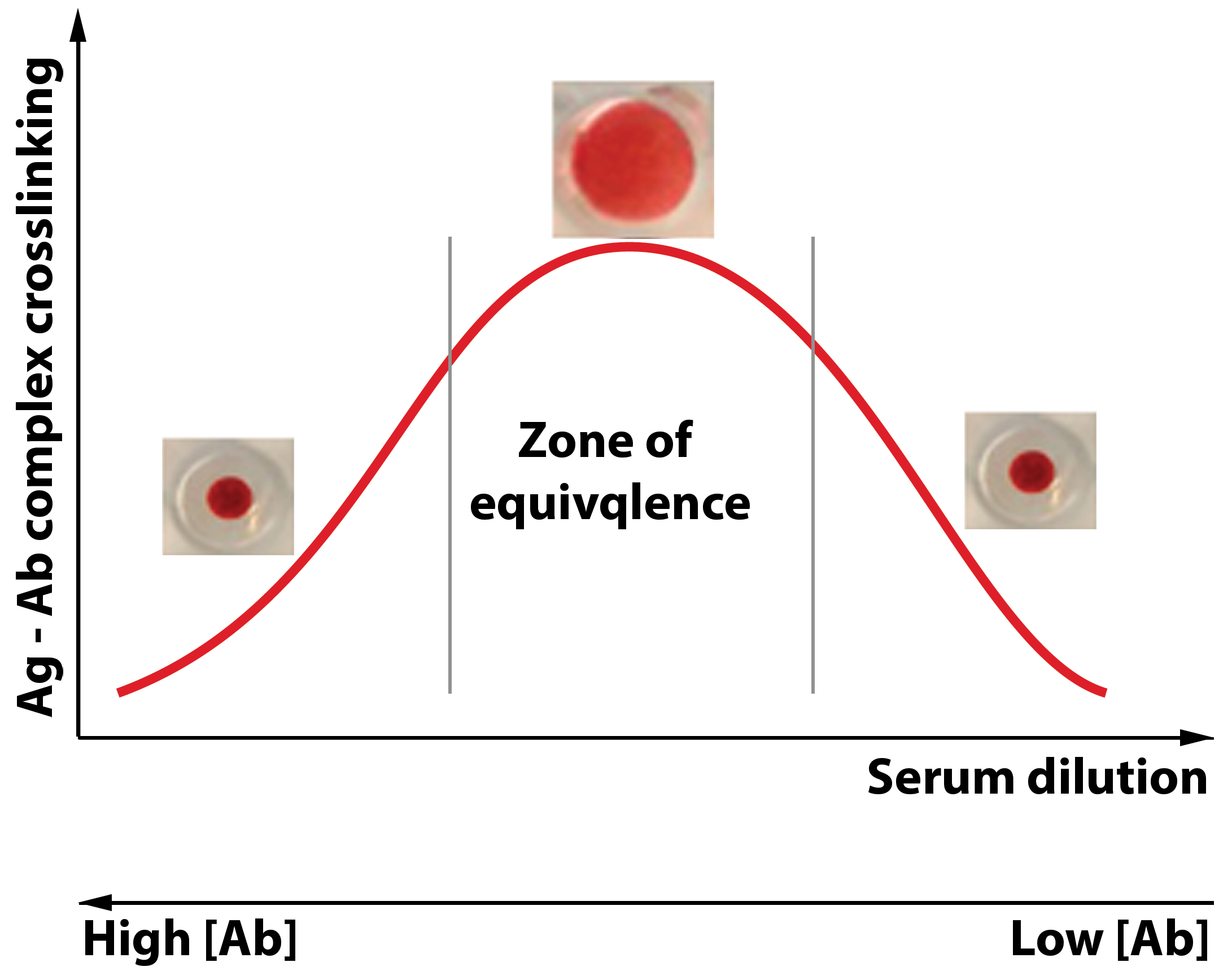Antibodies can be detected in the serum of animals. If red blood cells are used as a source of antigen, the assay is called hemagglutination. An animal injected with Sheep red blood cells (SRBC) will develop antibodies against SRBC. In the experiment, SRBC are added to serially diluted serum from an immunized animal. The antibodies in the serum will agglutinate the SRBCs added in a test well, resulting in a specific pattern at the bottom of the well.
Hemagglutination:
- measures the concentration of antibody in serum relative to the antigen
- antibody concentration is expressed as Titer
- in our experiment, the surface protains of the SRBCs are the antigen, but an indirect assay can also be devised if the antigen is linked to RBC
Mandatory revision of serial dilutions
Results:
Antibody may be detected and measured by hemagglutination at lower concentrations than those detectable by other techniques. This relies on the ability of antibody to cross-link red blood cells by interacting with the antigens on their surface.
The agglutination of an antigen, as a result of crosslinking by antibodies, is dependent on the correct proportion of antigen to antibody.
Reading the 96-well plate:
A. If sufficient antibody is present to agglutinate and form cross-linking with the antigen, the antibody-antigen complex forms a mat at the bottom of the well.
B. If insufficient antibody is present, the cells roll down the sloping sides of the well to form a red pellet or "button" at the bottom of the well.
Discussion:
In the zone of equivalence, the correct proportion of antibody to antigen occurs, resulting in a visible mat formed by Ag-Ab complex crosslinking.
At high concentration of antibodies: Ag-Ab complex crosslinking is prevented because every epitope on an antigen particle may bind to a single antibody molecule.
At higher dilutions, agglutination may occur: crosslinking is possible.
Testing serum at only one concentration may give misleading conclusions. What might the absence of agglutination reflect?


